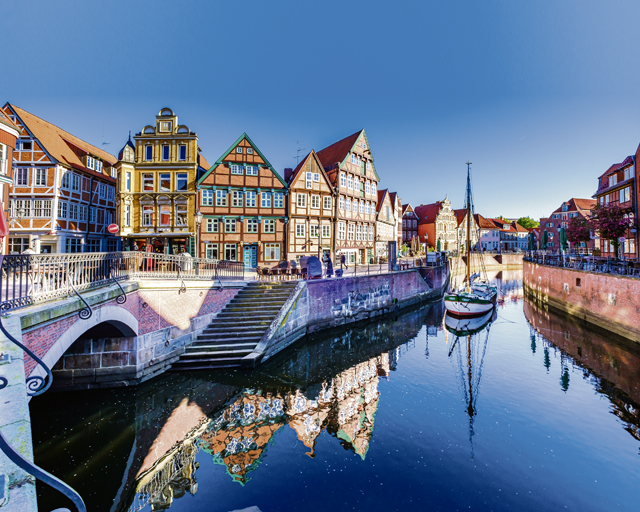
For many a road-tripper, traveling through Germany evokes images of storybook villages surrounded by lush forests, castles perched high on mountaintops, or mysterious Roman or Celtic artifacts in unsuspecting locations. Aside from having some of the best road conditions throughout Europe, Germany has taken a lot of the guess-work out of planning by naming routes that highlight particular interests. Would you like to see castles? Take a drive on the Burgenstrasse (German Castle Road). Want to travel in the footsteps of the Romans? Follow the Romantische Strasse (Romantic Road). Do you like medieval villages or timber-framed houses? If you answered, yes, then read on.
The Deutsche Fachwerkstrasse (German Timber-Frame Road) was created in 1990 by the Historische Fachwerkstadte e.V. or ARGE (Association of Historic Timber-Framed Towns). The ARGE connected historic villages from the northernmost part of Germany to the southernmost tip overlooking the Bodensee. The German Timber-Frame Road is approximately 3,900km long and is divided into eight regional routes and crosses through eight federal states.
The process of timber-framing is one that has clearly stood the test of time. Many of the timber-framed villages in Germany are close to 1000 years old and some, older. Timber-framing involves building a structure with notched beams secured by wooden pegs. The gaps between the beams are called panels (Facher in German). The panels are filled with any of a variety of materials that contain insulating properties such as brick, sticks, hay, or more commonly, wattle and daub. The coating of daub has many recipes, but generally was a mixture of clay and chalk with a binder such as grass or straw and water or urine. The panels were then covered with a type of plaster and sometimes painted, but the timber beams were left exposed, creating a stylistic effect.
In Germany, the timber structure usually sits on a base of concrete or brick so that the exposed timber beams begin well above ground level. These historical half-timbered structures are protected in Germany and should the owner of a historical timber-framed house want to renovate, they must first seek approval from the German government.
Many of the villages on the German Timber-Frame Road remain intact even after hundreds of years which only helps to draw tourists and increase their popularity. Below, is a list of ten of the most beautiful timber-frame villages in Germany, most of them, can be located along the Deutsche Fachwerkstrasse.
Stade
Even though Stade isn’t part of the Deutsche Fachwerkstrasse it is worth a visit. About 45 km west of Hamburg (approximately 650k north of Kaiserslautern), is the village of Stade. Stade sits on the river Elbe, in Lower Saxony. The first mention of Stade was in 934, but traces of human settlers have been found in the area that date back to 30,000 BC. If you’re planning a trip along the Deutsche Fachwerkstrasse, Stade is a good place to begin, especially if your trip is only going to be one-way. https://www.stade-tourismus.de
Quedlinburg
Southeast of Stade and slightly off the Deutsche Fachwerkstrasse, is the village of Quedlinburg. Quedlinburg has the largest collection of timber-framed houses — more than 1,300. In 1994, UNESCO designated the village of Quedlinburg a World Heritage site. Even though it is not located on the Deutsche Fachwerkstrasse, the village of Quedlinburg deserves a mention and to be added to the list of the most beautiful German timber-frame villages.
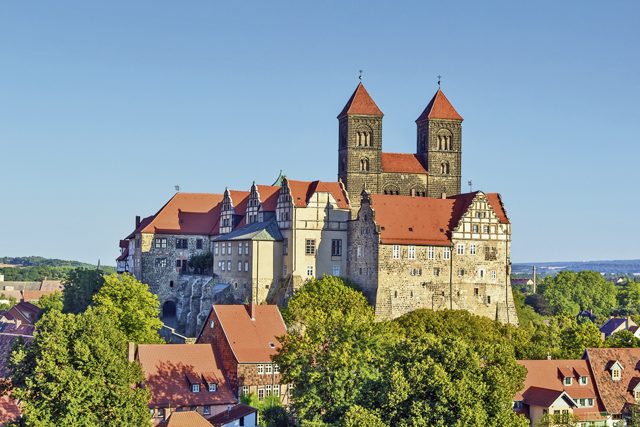
Like much of Germany, Quedlinburg suffered extensive damage during the 30 Years’ War. However, the village was quickly able to begin rebuilding. During this period, it developed its own style of half-timbered construction. Diamond cuts at the ends of the horizontal beams and projecting bays mark the construction style of this period. In addition to being one of the three cities in Germany known for holding the most important collections of church treasures, Quedlinburg houses the tomb of the 10th Century German King Henry in the Church of St. Servatius. Quedlinburg is located approximately 500 km north of Kaiserslautern, direction Leipzig. https://www.quedlinburg-info.de/en/
Celle
Returning to the Timber-Frame Road, to the west of Quedlinburg and south of Stade, is the village of Celle. The town is located on the Aller River, and is known for being the “gateway to Lueneburg Heath,” a nature reserve. Celle Castle dates back to 1530 and belongs to one of the oldest dynasties still in existence. The palace is known to be one of the best examples of Renaissance art in Germany.
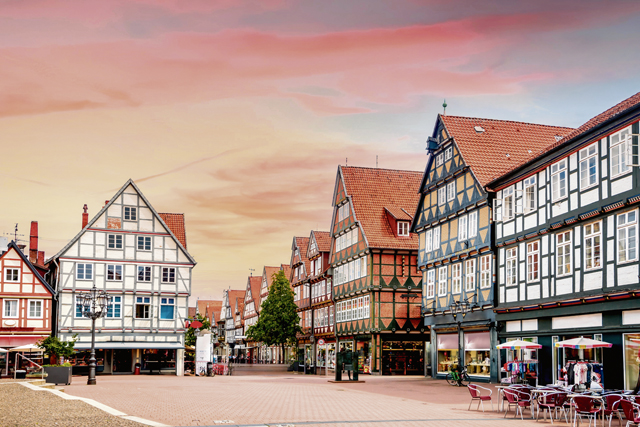
During WWII, the town suffered some destruction but was spared when German soldiers surrendered. Since then, the town has seen tourism grow and has revived the tradition of having a trumpeter blow his horn from the white tower of the Stadtkirche, city church, twice a day. The tower dates back to 1308. Celle is located approximately 500 km north of Kaiserslautern. http://www.celle.travel
Einbeck
Along the Timber-Frame Road and located in the district of Northeim in the state of Lower Saxony, is the village of Einbeck. Einbeck remains a nearly intact example of a medieval village. It dates back to 1158, and between the 14th – 15th Centuries, was one of the largest cities in Northern Germany. In 1540, the town was completely devastated by fire to which the blame was swiftly put on a man by the name of Heinrich Diek. Diek was convicted of arson and placed inside a hanging iron cage to die.
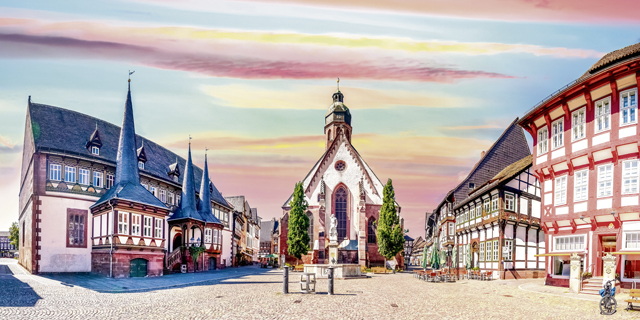
The village swiftly rebuilt after the fire and where possible, existing structures were reused. The rebuilt city from the mid-16th Century, is what we see today. Archeologists have since unearthed artifacts from the area that date back to the Paleolithic Era. The cage where Heinrich Diek hung can still be seen hanging on display in the town hall. Einbeck is located south of Hanover and approximately 120km west of Quedlinburg. It is about 400km north of Kaiserslautern. https://www.einbeck-tourismus.de/en/
Wetzlar
Further south on the Fachwerkstrasse in the direction of Frankfurt in the state of Hesse, is the village of Wetzlar, situated on the river Lahn. Wetzlar was once the Seat of the Imperial Supreme Court (Reichskammergericht) of the Holy Roman Empire. Roman remains from the reign of Emperor Agustus (27 BC – 14AD) have been unearthed there.
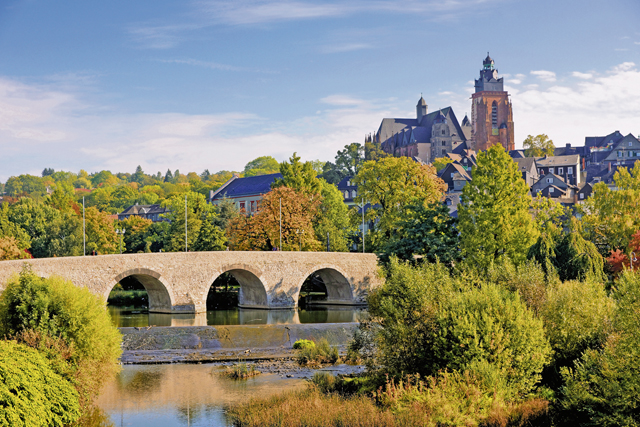
The church steeple remained unfinished since the Middle Ages. During WWII the area surrounding Wetzlar and part of the church suffered damage. A decision was later made to rebuild the church to its original prewar state, unfinished steeple and all; today, the church steeple remains unfinished. The historic city center was luckily spared. The novel, The Sorrows of Young Werther by Johann Wolfgang von Goethe was inspired by Goethe’s time in Wetzlar. Wetzlar is located about 180km north of Kaiserslautern, near Giessen. https://www.wetzlar.de/microsite/en/index.php
Limburg a.d. Lahn
Remaining on the Fachwerkstrasse, west of Wetzlar, Limburg an der Lahn is also in the state of Hesse. Limburg a.d. Lahn is located about 63km north of Frankfurt situated on the river Lahn in a basin surrounded by mountain ranges.
The city was of great importance during the middle ages. Its first mention was in the year 910. The town was strategically located on a Roman trade route. The Old Lahn Bridge (Alte Lahnbruecke) was originally built out of wood in 1248 but replaced with stone in 1306. In comparison to the traditional two-toned timber-framed homes of Germany, the colorful structures in Limburg a.d. Lahn stand out. For example, St. George’s Cathedral is accented in red.
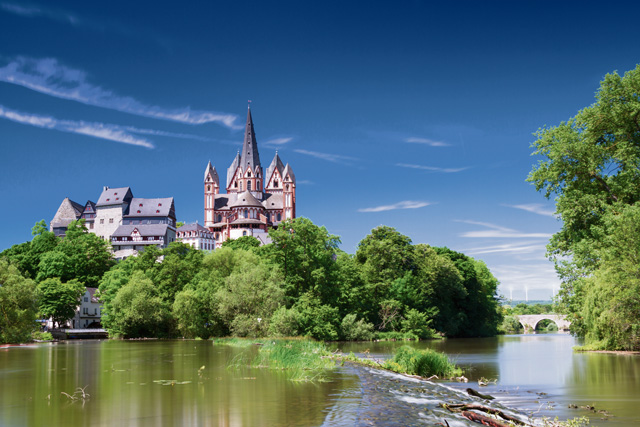
Many of the wood carvings on the facades have been painted in a variety of colors and some of the timbers have also been painted, providing a unique shift in perspective from the traditional medieval village. The town is known for its virtually unscathed medieval buildings; the original town wall still stands on the Deutsche Fachwerkstrasse. Among the sights to see in Limburg a.d. Lahn are the St. Anna Kirche which contains 18 stained-glass scenes from the New Testament dating back to the 14th Century and Brueckengasse 9, known for its wood carvings of the seven deadly sins. If you’ve ever wondered what Germany’s oldest half-timbered free-standing house looks like, that’s in Limburg a.d. Lahn as well at Roemer 2-4-6. This picturesque town is located 150km north of Kaiserslautern. http://www.limburg.de
About the author: Ruth Cuevas is a freelance writer, Adjunct Professor and Yoga instructor who has lived in six countries in three continents since 2008. Her writing can be seen in ATOD Magazine www.atodmagazine.com and Elephant Journal www.elephantjournal.com.


